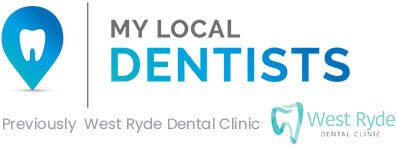
Damaged teeth are common, but broken tooth treatment varies according to factors such as what and where the tooth is broken, the location in the mouth, your budget, and your goals and preferences. Tooth restoration treatments range from small composite fillings for minor chips and cracks to dental crowns for more extensive damage. Read about the different broken tooth treatments and see which solution works best for you.
Often, people associate a broken tooth with trauma—such as a sports injury or other accident. However, a broken tooth can also result from tooth grinding, jaw clenching or even a bad habit, such as biting fingernails. Thus, a broken tooth does not necessarily mean it is a dental emergency that requires an immediate appointment with an emergency dentist. Let’s take a look.
When is a Broken Tooth a Dental Emergency?
Ordinarily, it is usually apparent when broken tooth treatment is required as a dental emergency. It tends to be where there is extensive damage, severe pain or uncontrolled bleeding. Some scenarios that may require a visit to an emergency dentist include a knocked-out tooth or if a large piece has broken off or a tooth has split in two.
However, even if you don’t think your damaged tooth warrants a dental emergency, arranging a routine appointment with a dentist for a check-up is still crucial to determine if further treatment is required.
Broken Tooth Treatment – What Options are Available?
The extent of the damage will affect what treatment the dentist recommends, as some are only suitable for minor damage. Even if you have significant damage, the treatment you receive in a dental emergency will be to make you comfortable and stem any bleeding since most treatments to repair a tooth require more than one visit.
Fillings and Bonding
If the tooth’s damage is minor, such as chipping off a small amount of tooth enamel, a filling or dental bonding may be suitable to repair it. Bonding is a composite resin the dentist applies to the tooth, which is colour-matched to provide an invisible repair.
Inlays and Onlays
Dentists often turn to inlays and onlays when the damage is more significant but not enough to require a dental crown. They are customised restorations made in a laboratory from tooth-coloured composite or porcelain or gold and bonded onto the damaged section of the tooth.
Inlays and onlays are used when there is insufficient structure to support a filling and are more robust. The difference between the two is that inlays are placed inside a tooth cavity while onlays replace the tips (cusps) of the teeth.
Dental Crowns
A dental crown is used as a broken tooth treatment when the damage to the tooth is more substantial and where the tooth will benefit from the added support provided by the crown. As well as adding strength, crowns offer an excellent cosmetic appearance, improving a tooth’s shape, size and colour.
 Root Canals
Root Canals
Root canal treatment is often required when the soft pulp centre of a tooth has been exposed, leaving it open to infection. A tooth infection can cause a lot of pain; extraction may be the only option without root canal therapy.
A root canal may also be necessary if the tooth has been knocked out. Visiting an emergency dentist within 30 minutes is essential to stand the best chance of saving the tooth.
Broken Tooth Treatment – The Takeaway
It’s not always the case that a broken tooth requires an emergency dentist. But—you should have it checked out by a dentist sooner rather than later, so contact My Local Dentists West Ryde on (02) 9809 7000 today.
Note: Any surgical or invasive procedure carries risks. Before proceeding, you should seek a second opinion from an appropriately qualified health practitioner.
References
Colgate: What is dental bonding?
https://www.colgate.com/en-us/oral-health/bonding/what-is-teeth-bonding
Healthline: Root Canal
https://www.healthline.com/health/root-canal
